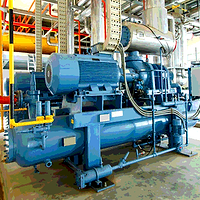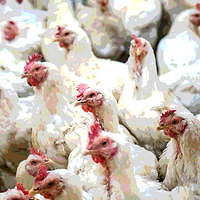Food defense is more than preventing the intentional adulteration of food products. Food defense also includes defending the critical infrastructures of agriculture and food against any threat that might disrupt or destroy the availability of the end product—food. Food security and food defense are inextricably linked.
I have written a great deal about the need to widen the definition of food defense to include processes, systems, facilities, and personnel. This expanded approach includes the need to protect industrial control and chemical systems,[1] a need that was made clear by a recent article in the U.S. Centers for Disease Control and Prevention’s Morbidity and Mortality Weekly Report. Entitled “Inhalational Chlorine Injuries at Public Aquatic Venues—California, 2008–2015,”[2] the paper opens with a harrowing account of chlorine gas being released at an outdoor swimming pool in California. The accidental mixing of muriatic acid and sodium hypochlorite created chlorine gas, causing 50 people to experience vomiting, coughing, and eye irritation. The paper identifies eight additional cases of toxic chlorine release at public aquatic venues, caused by equipment failure or human error and sickening 156 people.”
Chlorine gas leaks or even ammonia leaks—most of them not serious—happen occasionally in the food and allied industries. For example, Tyson recently experienced an ammonia leak in its Goodlettsville, TN, plant.[3] Like the swimming pool accidents, most of these incidents result from equipment failure or human error. Chlorine gas and ammonia can, however, be leaked intentionally. The ISIS terrorist organization used chemical arms, including chlorine gas, 52 times in Syria and Iraq.[4] More recently, ISIS has used chemical on Iraqi troops.[5]
ISIS and its affiliates know how to convert chemicals such as chlorine and ammonia into weapons. The Middle East Media Research Institute reports that last year the ISIS media office in Iraq released a video titled We Will Surely Guide Them To Our Ways. The video featured fighters from the U.S., Canada, the U.K., Russia, and Belgium calling on Muslims living in the West to carry out attacks there. The video features U.S. cities, landmarks and institutions, including Times Square, Washington D.C., Las Vegas and Johns Hopkins University in Baltimore.[6]
ISIS wants to attack United States citizens by attacking our critical infrastructures. A breakdown in U.S. food defense would give this adversary the opportunity to create another American tragedy, and just because we have not yet experienced an attack using ammonia, chlorine, or some other industrial gas doesn’t mean such an attack couldn’t occur in the future. Guard your chemicals as well as your systems and processes. Remember the potential for insider threats—ISIS or other radical group sympathizers could be in your place of employment or attempting to infiltrate.
Robert A. Norton, Ph.D., is a professor at Auburn University and chair of the Food Defense Working Group in the Auburn University Food System Institute. A long-time consultant to federal and state law enforcement agencies, the Department of Defense, and industry, he specializes in intelligence analysis, weapons of mass destruction defense and national security. For more information on the topic or for more detailed discussions about specific-security related needs, he can be reached at nortora@auburn.edu or by phone at 334.844.7562.
References
1. www.food-safety.com/blog/industrial-chemical-systems-threat-mitigationan-important-element-in-food-defense/.
2. www.cdc.gov/mmwr/volumes/66/wr/pdfs/mm6619a3.pdf.
3. www.tennessean.com/story/news/local/sumner/2017/05/18/ammonia-leak-reported-goodlettsville-tyson-foods-plant/329478001/.
4. www.nytimes.com/2016/11/21/world/middleeast/isis-chemical-weapons-syria-iraq-mosul.html.
5. www.newsweek.com/isis-militants-chemical-weapons-attack-soldiers-iraq-585174.
6. www.memri.org/reports/isis-video-features-american-canadian-british-russian-belgian-fighters-urging-muslims-carry.
Chlorine and Ammonia Deserve a Second Look as a Potential Food Defense Issue




